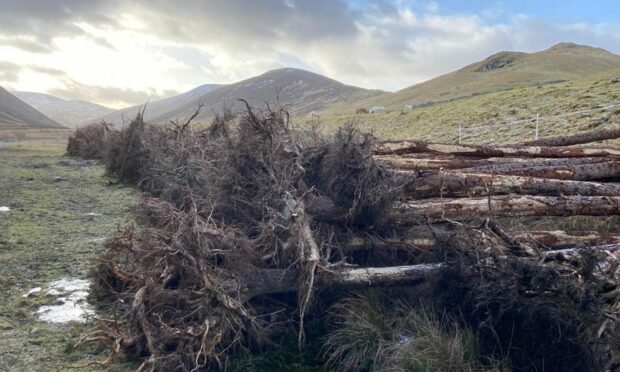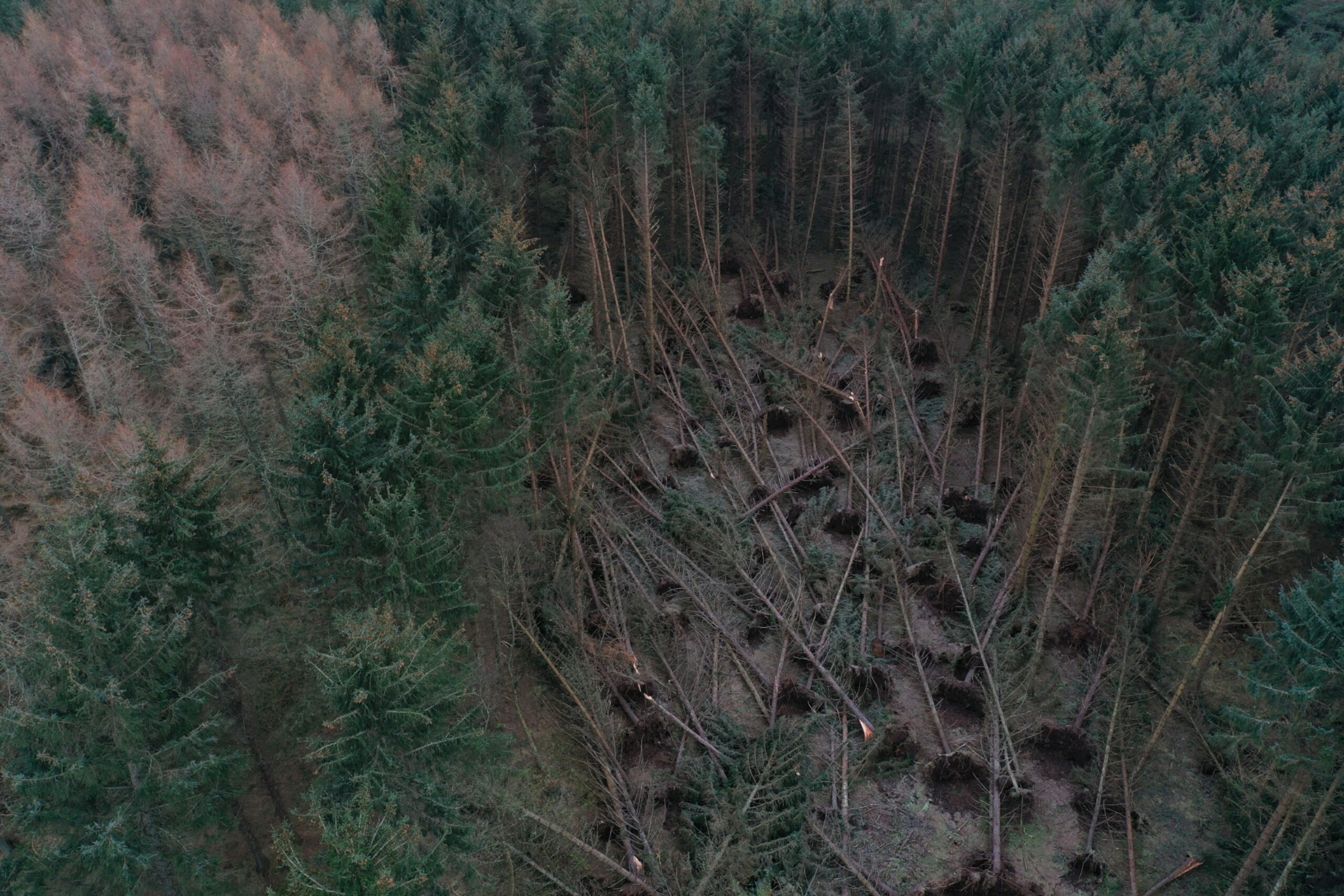Hundreds of trees which were felled by extremely high winds will be given a new life restoring an Aberdeenshire river system.
During the period of frequent storms from November 2021 to early 2022 — including the notorious Storm Arwen — millions trees all across Scotland were damaged and knocked down.
But now, a year later, an environmental project is looking to use 330 of these uprooted trees to help nature recover.
They have all been piled up at the side of the A93 Braemar to Glenshee road, and many of them will be utilised in a large-scale river project south of Braemar.
What exactly will the trees be used for in Aberdeenshire?
Forestry and Land Scotland, as well as Invercauld Estate, intend to recycle these dead trees in the summer months through a project led by the Dee District Salmon Fishery Board.
Bundles of them, along with their roots, will be carefully lowered into the Clunie Water, a tributary of the River Dee which flows through Glen Clunie alongside the A93, and joins the river at Braemar.
It’s hoped the old wood being placed into the Clunie will help the ecosystem take on a more naturalised state.
Edwin Third, operations manager at the fishery board, said it’s “exciting to see some of the terrible damage of the recent storms turned to good for the benefit of our rivers”.
He said: “Through this project, we are helping natural processes to return to the river system.
“Before the historic loss of woodland in our upland glens, trees would have naturally fallen into the water along the riverbanks.
“The trees will be firmly anchored in position as the water flows around them, the riverbed changes, and soon produces ideal spawning habitat for salmon and trout.”
Edwin explained the presence of the trees will create shelter and refuges of cooler water for both young and adult dish to benefit from during hot summer spells.
And the roots of the trees will catch debris, and attract bugs — which in turn provide food for fish, birds, and other wildlife.
The project is being funded by the Scottish Government, and builds on similar work started in the River Dee in 2018.
The fishery board said it is already seeing improved numbers of young fish in areas where other wooden structures have been installed.




Conversation